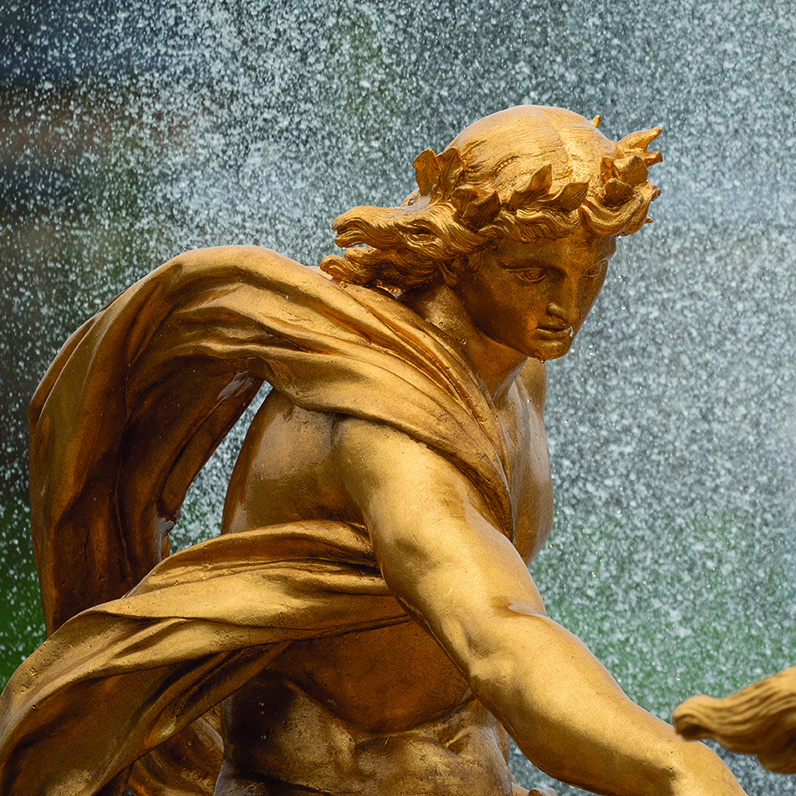The Apollo Fountain sculpture at the Château de Versailles has finally returned from its first serious restoration in 100 years, just in time for the 2024 Summer Olympics, when the royal grounds will host the equestrian competitions of jumping and dressage, as well as para-equestrian events and the five modern pentathlon tournaments.
Positioned at the head of the Grand Canal, the Baroque masterpiece was designed by Charles Le Brun and executed by Jean-Baptiste Tuby between 1668 and 1671. Thirty at the time, Louis XIV, the king of France, was impatient to make his mark on the gardens, which is why the fountain’s 13 figures were not carved in marble but molded in lead and coated in bronze powder. During the long reign of this king, the powder was regularly touched up by a man in a small boat. But in the 1800s, the procedure was abandoned and gilding was applied. Now, after 18 months of careful work and 35,000 sheets of gold leaf, the formerly rusty, mossy, and cracked Apollo Fountain figures are once again splendidly ablaze.

Apollo, son of Zeus, was a god of the sun, music, art, poetry, and dance. He was also Louis XIV’s personal signifier—eternally beautiful and forever on the cusp of a new day. The Apollo Fountain shows the sandaled golden god charging forward in his chariot, his magnificent physique both covered and revealed by billowing fabric. The faces of his four horses, emerging at full gallop from the water in the basin, are contorted with the stress of their efforts and extravagantly dramatic. Triton’s raised conch shell sounds the dawn. The sculpture is wonderfully kinetic when the water is flowing, and just as beautiful when it is still.

Louis XIV believed in the divine right of kings, but he also took every possible step to consolidate his power. He insisted, for instance, that his nobles live at Versailles, where they were occupied with the minute details of his life. Human nature and the ambition for advancement did the rest: Louis was the center of everything, animating the courtiers wherever he went. Every woman hoped to catch his eye and every man longed for a companionable chat that could turn to their advantage. Versailles gave physical expression to his majesty, and the myth of the Sun King underpinned his temporal power.
In fact, Louis XIV was fully literate in the language of mythology, the result of a clever trick by Cardinal Mazarin, who oversaw the education of the fatherless young king. When Louis was six, he was presented with some card games designed by the Italian engraver Stefano della Bella. One of them, entitled Jeu de la Mythologie, taught the gods and goddesses. Later, Louis would establish a “Petite Académie” at Versailles, which worked alongside Le Brun and the landscape architect André Le Nôtre to create mythological designs for the palace and gardens, ensuring a coherent visual message that fused monarchy with myth.

Jacques Moulin, France’s chief architect of historic monuments, told me there was always a double meaning in the mythological schemes at Versailles. But was it a conscious attempt to create a power narrative, I asked, or was it just for fun? Walt Disney certainly found the palace and gardens inspiring. With a gallic shrug and an enigmatic smile, Moulin said, “At Versailles, the mythology was so powerful that sometimes it was more powerful than the truth, and it was all quite within the rational of the time.”
Sarah Hyde is a London-based writer

